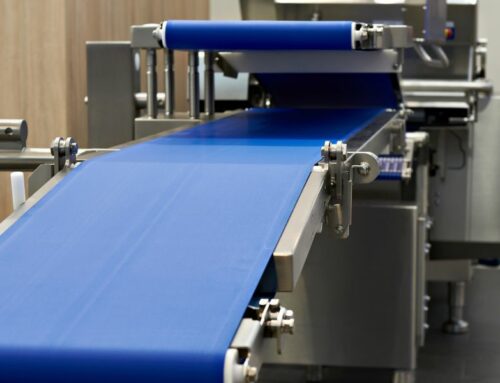Conveyor belts are an essential part of many industries; they help move products from one place to another and automate work processes, resulting in faster and more efficient production. But improper tension in conveyor belts can cause serious problems, including poor tracking, belt slippage, and even catastrophic belt failure.
Hence, checking the tension on your conveyor belt is essential to ensure smooth operation and prevent downtime. Let’s go through the steps necessary to check and maintain the correct tension on your conveyor belt.
Assess the Belt and Drive
First, you need to visually inspect the belt and the drive itself to ensure no damage or mistracking is present. If a more significant problem is not corrected, adjusting the tension on the conveyor belt will not solve it. Assessing the belt involves checking for cuts, gouges, and any other signs of damage. You should also examine the drive to ensure the pulleys and other components are correctly aligned, and there’s no buildup of debris, which can affect belt tension.
Determine the Tension Required
Once you confirm that the conveyor belt and drive are in good condition, you’re ready to check the correct tension for your belt. Following the manufacturer’s recommended guidelines is the best way to do this. However, if these aren’t available, there are other methods that you can use. One of the most popular ways is to use a belt tensiometer. A belt tension gauge is a tool that can indicate the amount of tension present in a conveyor belt, providing accurate tension measurement.
Adjust the Tension
You can adjust the conveyor belt’s tension with the correct tension determined. This adjustment involves loosening or tightening the belt tensioner, typically at the conveyor frame’s end. Depending on the conveyor model and the level of tension required, you might need to adjust the tension in small increments. It’s crucial to adjust the tension slowly, ensuring the belt moves correctly and is not over-tensioned or loose, as both of these scenarios could cause further problems later.
Test the Conveyor
Once you’ve adjusted the belt’s tension, you should monitor the conveyor to ensure it operates correctly. The belt should move smoothly without wobbling, mistracking, or other issues. You should also check for any unusual wear, as this could indicate the tension is incorrect. You must test the conveyor before returning it to operation to prevent issues that could lead to downtime.
Conduct Regular Maintenance
Checking the tension on your conveyor belt should be part of your routine maintenance program. Depending on how frequently you use your conveyor belt and the conditions in which it operates, you should conduct maintenance checks at regular intervals. These maintenance checks should assess various components of the conveyor belt, such as the pulleys, rollers, and bearings, which you should check for any signs of wear or damage.
Ensuring the correct tension on your conveyor belt is vital to avoid problems like mistracking, slipping, and other serious issues. Determining and adjusting your belt’s tension doesn’t have to be complicated or time-consuming, and the best way to succeed is by following the manufacturer’s guidelines when they are available. If you don’t have these guidelines, you can use a belt tensiometer to determine the correct tension required for your conveyor belt.
By following these steps, conducting regular maintenance, and anticipating wear and tear of the conveyor belt, you can avoid costly breakdowns and downtime, helping improve production efficiency and profitability.
Redline Systems offers cleated conveyors that help you maintain tension and keep your conveyor running smoothly. Contact us today for more information about our products.



